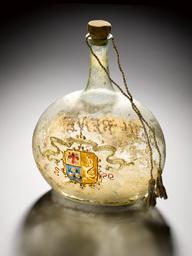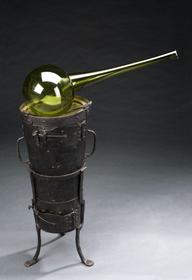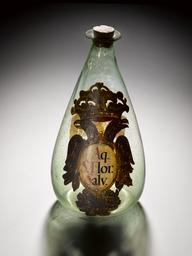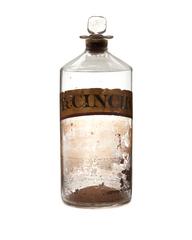

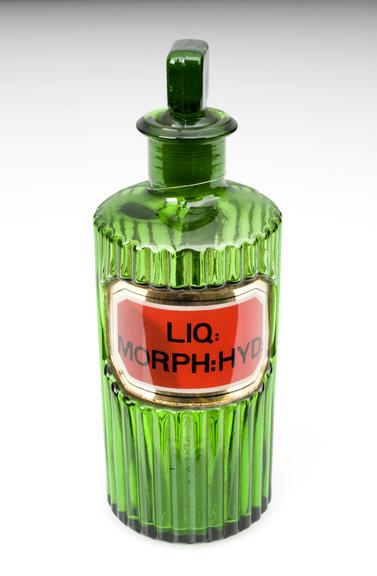
Green ribbed poison shop round for morphine with indented painted label in red, gold, black and white.144 mm x diameter 52 mm. Label reads 'LIQ:/MORPH:HYD:'. Empty. Unknown maker, Europe, 1701-1935.
‘LIQ: MORPH. HDY’ is printed on this green ridged glass bottle. It is abbreviated Latin for “Solution of morphine”. Morphine was first isolated in 1803 by German pharmacist Friedrich Sertürner (1783-1841). The name refers to Morpheus, the ancient Greek god of dreams. It is a powerful painkiller that also induces drowsiness and sleepiness and is still extensively used today.
Morphine’s use rose dramatically after the hypodermic needle was developed in the 1850s, which allowed it to be injected directly. Morphine is highly addictive. However, it was sometimes prescribed for alcohol or opium addiction.
Details
- Category:
- Medical Glass-ware
- Collection:
- Sir Henry Wellcome's Museum Collection
- Object Number:
- A600211
- Measurements:
-
overall: 144 mm 53 mm, .181 kg
- type:
- shop round
- credit:
- Wellcome Trust
